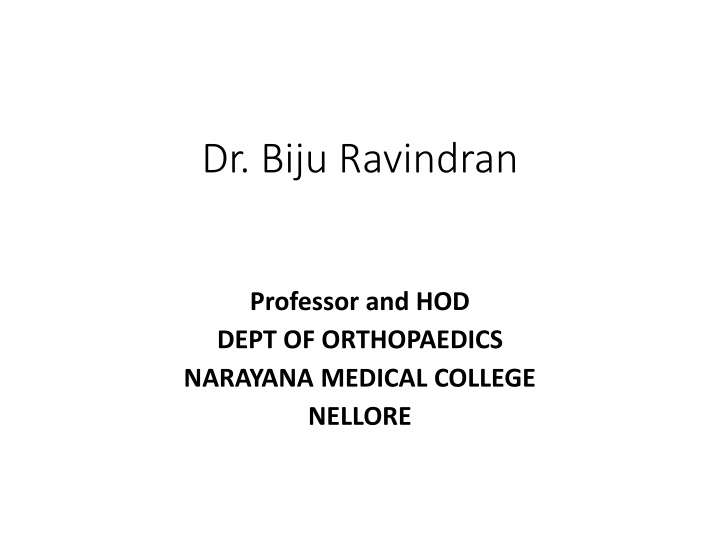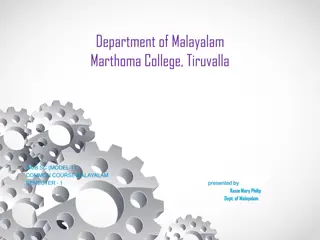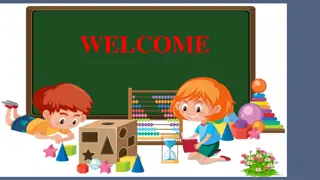
Effective Bedside Teaching and Professionalism in Medical Education
Learn about the importance of bedside teaching manners, professionalism, and effective communication skills in medical education. Discover the key elements of communication, best practices for bedside teaching, and the process of teaching medical procedures. Enhance your skills as a healthcare provider or educator through engaging and interactive educational approaches at the bedside.
Download Presentation

Please find below an Image/Link to download the presentation.
The content on the website is provided AS IS for your information and personal use only. It may not be sold, licensed, or shared on other websites without obtaining consent from the author. If you encounter any issues during the download, it is possible that the publisher has removed the file from their server.
You are allowed to download the files provided on this website for personal or commercial use, subject to the condition that they are used lawfully. All files are the property of their respective owners.
The content on the website is provided AS IS for your information and personal use only. It may not be sold, licensed, or shared on other websites without obtaining consent from the author.
E N D
Presentation Transcript
Dr. Biju Ravindran Professor and HOD DEPT OF ORTHOPAEDICS NARAYANA MEDICAL COLLEGE NELLORE
Bed side teaching manners and learning in hospital Medical procedural teaching What is professionalism Learning to be professional
The teaching of bedside manners sets the stage for the many episodes of teaching clinical skills at the bedside. This will make them better and more effective physicians during the years of their practice of medicine. Effective communication with patients impacts clinical outcome and patient satisfaction.
6 communication elements: - acknowledging the patient by name - introducing themselves by name - identifying their role - explaining the care plan - explaining that multiple providers would see the patient - providing an estimated duration of time of treatment
A bedside teacher must learn how to involve patients and learners in the educational processes. Specific aspects of bedside teaching should include history taking, physical examination, patient counselling, breaking bad news. A planned activity is required to keep everyone engaged and involved in the teaching and learning. Bedside is a place for positive learning, and not a place for pointed questioning or criticism of learners. 3 domains of best bedside beaching practices are -attending to patient comfort -focused teaching -group dynamics.
Medical procedural teaching Medical procedural teaching
Teaching a skill or proceedure Teacher explains the proceedure student understands it Student explains the proceedure Teacher corrects or adds inputs Teacher performs while explaining student observes Clearing of doubts before performing the proceedure Assisted performance by the student Correction or adding inputs/feedbacks by the teacher Assisted performance by the learner while explaining Individual performance Repeat proceedure Teaching the proceedure ( reinforcement )
Professional competence is the habitual and judicious use of communication, knowledge, technical skills, clinical reasoning, emotions, values, and reflection in daily practice for the benefit of the individual and community being served.
The attributes of a professional Honesty Knowledge Competency Specialized Integrity Self- Image Accountability Regulation
Attributes ofProfessionalism Specialized Knowledge Competency Honesty and Integrity Accountability Self-Regulation Image
SpecializedKnowledge Professionals make a deep personal commitment to develop and improve their skills.
Competency Professionals get the job done. Professionals are reliable. Professionals keep their promises. Professionals don t make excuses, but focus on finding solutions.
Honesty and Integrity Professionals don t lie, cheat, or steal. Professionals can be trusted. Professionals don t compromise their values. Professionals will do the right thing even if it means taking a harder road.
Accountability Professionals hold themselves accountable for their thoughts, words, and actions especially when they ve made a mistake. Accountability is closely tied to honesty and integrity and is a vital element in professionalism.
Self-Regulation Professionalism under pressure. Professionals show respect for the people around them, no matter what their role or situation. They exhibit a high degree of emotional intelligence by considering the emotions and needs of others.
Professionals should look the part. They don t show up at work sloppily dressed, with unkempt hair. They dress appropriately for the situation Because of this, they exude an air of confidence and they gain respect for this.
Standards for Student Conduct Demonstrate courtesy, even when others do not. Behave in a responsible manner, always exercising discipline. Attend all classes, regularly and on time. Prepare for each class Meet campus standards of grooming and dress. Obey all campus and classroom rules.
Standards for Student Conduct Respect the rights and privileges of other students, teachers, and other staff. Respect the property of others and facilities. Adhere to the requirements of the Code of Conduct.






















